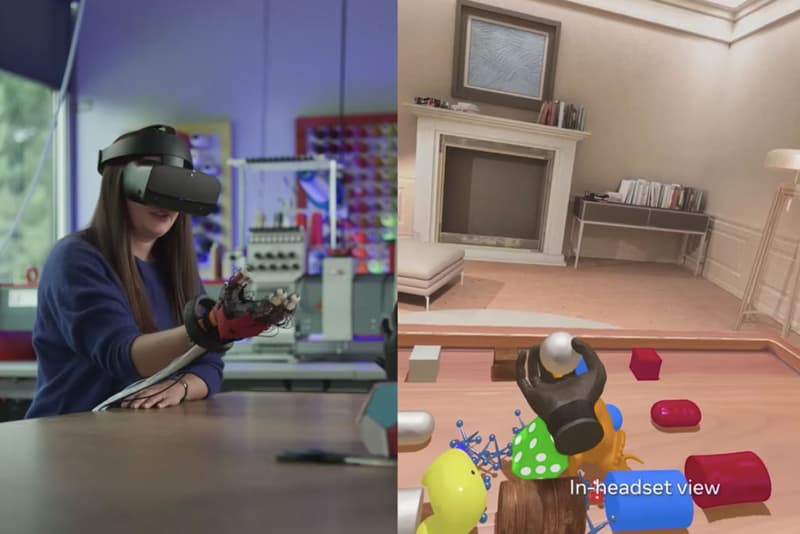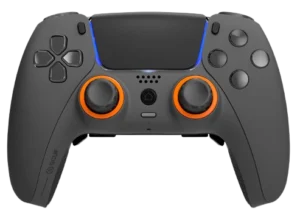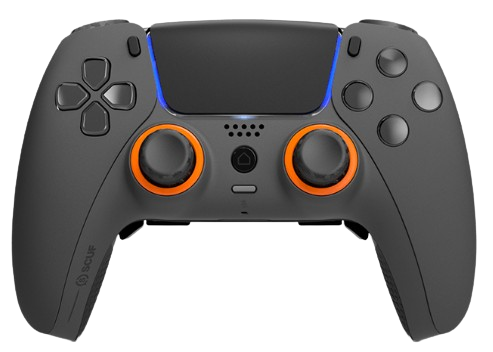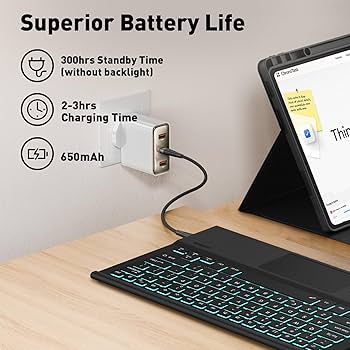The landscape of modern video games is a testament to relentless technological advancement. For decades, the primary arms race in the gaming industry focused on visual fidelity—pushing more polygons, higher resolutions, and photorealistic lighting. While that pursuit continues, a new frontier has captured the attention of developers and enthusiasts alike: immersion. Today, the ultimate gaming experience is no longer just about what you see, but what you feel. This shift has ignited a revolution in gaming hardware, moving beyond the standard controller or keyboard and mouse to a sophisticated ecosystem of peripherals designed to blur the line between the virtual world and reality. From the subtle vibrations of a textured road felt through a haptic pad to the breathtaking presence of a virtual reality headset, hardware is fundamentally changing how we interact with our favorite games. This article delves into the core of modern gaming hardware, exploring the foundational components that power these experiences, the evolution of our primary input devices, and the cutting-edge tech that promises total immersion.
The Engine Room: More Than Just a Pretty Picture
Before we can feel the kick of a rifle or the G-force of a hairpin turn, the virtual world must first be rendered with flawless precision. The foundation of any immersive gaming experience, whether on a high-end gaming PC or the latest console, lies in its core components. These parts are the unsung heroes, doing the heavy lifting that makes next-generation gameplay possible.
Graphics Cards (GPUs) and Processors (CPUs)
The Graphics Processing Unit (GPU) remains the heart of any gaming machine. In the world of PC gaming, the battle between NVIDIA and AMD continues to drive innovation. Modern graphics cards, like NVIDIA’s GeForce RTX series or AMD’s Radeon RX line, are no longer just about raw horsepower for 4K resolution. They are packed with specialized cores for technologies like real-time ray tracing, which simulates the physical behavior of light to create incredibly realistic shadows, reflections, and illumination. Furthermore, AI-driven upscaling technologies like DLSS (NVIDIA) and FSR (AMD) allow games to run at higher frame rates without a significant loss in visual quality. This technological headroom is critical, as it frees up resources for the complex calculations required by advanced physics and haptic feedback systems in many AAA games.
The Central Processing Unit (CPU), meanwhile, acts as the brain of the operation. While the GPU renders the world, the CPU manages everything else: game logic, artificial intelligence, audio processing, and crucially, the constant stream of input and output data from peripherals. In a complex simulation or a massive MMORPG battle, a powerful CPU is essential to prevent bottlenecks that could lead to stuttering or lag, pulling you right out of the experience.
Display Technology: Your Window to New Worlds
Your gaming monitor is your portal to the game world, and its technology has evolved far beyond simply increasing pixel count. For competitive gaming, particularly in the esports news circuits covering titles like Valorant, Counter-Strike, and Apex Legends, high refresh rates are non-negotiable. A monitor refreshing at 144Hz, 240Hz, or even 360Hz displays more frames per second, providing smoother motion and a tangible competitive advantage by reducing the time between an event happening in-game and it appearing on your screen. Coupled with low response times (typically 1ms), these displays ensure a near-instantaneous connection between player action and visual feedback. Panel technology also plays a huge role; IPS panels offer superior color accuracy, while newer OLED gaming monitors provide perfect blacks and instantaneous pixel response times, making RPG games and cinematic single-player titles look breathtaking.

From Clicks to Sensation: The Evolution of Input Devices
For decades, our physical connection to games was limited to a few plastic buttons and analog sticks. Today, the market for gaming peripherals is a sprawling landscape of hyper-specialized equipment, each piece meticulously engineered to provide a superior experience for specific genres and playstyles.
The Classics, Perfected: Keyboards and Mice
For PC gaming, the mouse and keyboard remain the gold standard for precision, especially in FPS games and strategy games. The world of gaming keyboards is dominated by the debate between mechanical and membrane switches, with the former offering superior tactile feedback, durability, and customization. Gaming mice have become an obsession in their own right, with a focus on ultra-lightweight designs, flawless optical sensors with massive DPI (dots per linear inch) ranges, and low-latency wireless technology that is now indistinguishable from wired connections. This pursuit of perfection is driven by the demands of competitive gaming, where a single millisecond can determine the outcome of a match.
Beyond the Standard: Specialized Controllers and Racing Wheels
While the standard console controller is a versatile jack-of-all-trades, a new class of “pro” controllers from companies like Scuf and Victrix, as well as first-party offerings like the Xbox Elite Series 2, provides a new level of customization. Features like rear paddles, interchangeable thumbsticks, and trigger stops allow players to perform complex actions without taking their thumbs off the sticks. However, the most significant recent innovation comes from Sony’s PlayStation 5 DualSense controller. Its advanced haptic feedback and adaptive triggers have been a revelation, allowing developers to program nuanced sensations, from the pitter-patter of rain to the tension of a bowstring. This technology is influencing game design, pushing developers to think more about how a game should feel.
For simulation enthusiasts, immersion demands even more specialized hardware. The world of sim racing has seen racing wheels evolve from simple gear-driven toys to sophisticated direct-drive systems that connect the wheel directly to a powerful motor, replicating the forces felt in a real race car with astonishing accuracy. Similarly, flight sticks and HOTAS (Hands-On Throttle-And-Stick) setups are essential for flight simulators, providing the analog control and array of buttons needed to manage a complex aircraft.
The Final Frontier: Haptics, VR, and Total Immersion
The latest wave of gaming hardware aims to dissolve the screen entirely, placing the player directly inside the game world through sensory feedback and virtual presence. This is the cutting edge of gaming tech, where the lines between player and avatar begin to truly blur.

More Than a Rumble: The Nuance of Modern Haptics
For years, “haptics” in gaming meant the simple, indiscriminate rumble of an eccentric rotating mass motor in a controller. Modern haptic technology is infinitely more sophisticated. It utilizes devices like linear resonant actuators (LRAs) and bass transducers to generate highly detailed and localized vibrations. This technology is no longer confined to controllers. Haptic vests, like those from bHaptics, can simulate the impact of gunfire or the force of an explosion across a player’s torso. Haptic gaming pads and seats, designed for gaming chairs, can translate in-game audio cues into physical sensations. In a racing game, this allows you to feel the texture of the asphalt, the rumble of the engine, and the loss of traction as your car begins to slide. In an FPS game, it can differentiate the sharp kick of a sniper rifle from the rapid pulse of a submachine gun. This layer of physical feedback dramatically increases situational awareness and immersion.
Stepping Inside: The VR and AR Gaming Landscape
Virtual Reality (VR) gaming represents the ultimate immersive experience. Headsets like the Meta Quest 3, Valve Index, and PlayStation VR2 transport players into fully realized 3D worlds. The key specifications driving VR’s effectiveness are resolution per eye, a wide field of view (FOV) to eliminate the “goggles” effect, and a high refresh rate (90Hz or 120Hz) to ensure a smooth, nausea-free experience. Modern inside-out tracking, which uses cameras on the headset to track its position and that of the controllers, has made VR more accessible than ever, eliminating the need for external base stations. VR gaming has opened up new possibilities for game design, creating experiences that are simply not possible on a flat screen, from intricate puzzle games to intense, physical shooters. While still a growing niche, the impact of VR on the gaming industry and gaming culture is undeniable.
Building Your Arsenal: Tips for Selecting the Right Hardware
Navigating the vast market of gaming hardware can be daunting. With endless options and aggressive marketing, it’s easy to make a poor investment. Following a few best practices can ensure you get the most out of your setup.
Know Your Genre, Know Your Gear
The most important consideration is the type of games you play.
- Competitive FPS/Battle Royale (Call of Duty, Fortnite): Prioritize a high-refresh-rate gaming monitor (144Hz+), a lightweight gaming mouse with a flawless sensor, and a quality gaming headset for precise audio cues.
- RPG/Cinematic Adventure (The Witcher 3, Cyberpunk 2077): Focus on visual fidelity. A 4K monitor with excellent color accuracy (IPS or OLED) and a powerful graphics card will deliver the most breathtaking experience. A comfortable, high-quality controller like the DualSense can also enhance immersion.
- Simulation (Racing, Flight): There is no substitute for specialized peripherals. A direct-drive racing wheel or a comprehensive HOTAS setup is a significant investment but will transform the gameplay experience in ways a standard controller never can.
- Strategy/MOBA (League of Legends, Dota 2): A high-resolution monitor for more screen real estate and a gaming mouse with extra programmable buttons for macros can provide a significant advantage.
The Pitfall of “Pro” Branding and Future-Proofing
Be wary of products labeled “esports” or “pro” without understanding why. Research the specifications that matter—sensor type, switch type, latency figures—and read independent game reviews and hardware analyses. Don’t overspend on one component at the expense of another; a top-of-the-line GPU will be bottlenecked by an underpowered CPU. Finally, never underestimate ergonomics. A comfortable gaming chair and a well-designed mouse or keyboard can prevent strain and allow you to play comfortably for longer, which is just as important as any performance metric.
Conclusion: The Future is Tactile
The evolution of gaming hardware is a story of moving beyond passive observation to active participation. While graphical fidelity will always be a cornerstone of the gaming experience, the industry’s focus is clearly expanding. The push for more sophisticated peripherals, nuanced haptic feedback, and truly present virtual reality is reshaping our expectations of what a video game can be. The “best” hardware is no longer a one-size-fits-all solution but a personalized arsenal tailored to a player’s favorite genres and desired level of immersion. As technology continues to advance, we can expect the barrier between the player and the game to become even thinner, leading to experiences that are not just played, but truly felt.











